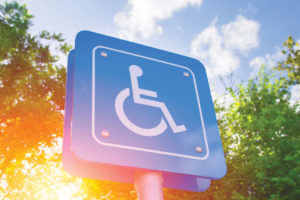By Darren Enns
The town of Banff is set in the confluence of three river valleys in some of the most biologically diverse lands in Banff National Park. The town site, which is just under 4 square kilometres, sits at the foot of Cascade, Tunnel, Rundle and Sulphur Mountains, alongside the Bow River and serves as a base camp to the national park experience. Banff’s awe-inspiring landscape attracts millions of visitors come here each year to experience the Town’s UNESCO World Heritage Site setting.
With 93% of Banff’s 3.8 million visitors per year arriving in a personal vehicle, traffic congestion is an issue which has required considerable time and resources to manage in recent years. In 2013 a “congestion threshold” of around 20,000 vehicles per day (vpd) at the town entrances was identified. Beyond this threshold it was established that traffic congestion is inevitable given the finite capacity of Banff’s road network. Since 2013 a number of initiatives have enabled an increase in the congestion threshold to around 24,000 vpd. Parking plays a key role in the current situation, with visitors consistently reporting that finding a parking spot in Banff was one of the least satisfying aspects of their visit. Additionally, a significant source of congestion within the town’s core is thought to be associated with vehicles circulating while looking for available parking.
In response, the Town commenced a pilot project in 2012 to install real-time stall availability technology in the largest downtown parking garage. This involved the installation of a parking guidance system making use of overhead ultrasonic detection. Once acceptable accuracy levels were reached, stall availability signage
was deployed on the facility and on adjacent streets to help guide motorists to
available stalls.
Subsequent to the initial pilot, a parking guidance system for a surface lot was deployed making use of individual in-ground…
By Danielle Desjardins
Illegal parking is a major nuisance in urban environments. It leads to reduced traffic speeds, congestion, changes in travel modes, loss of revenue from valid parking spaces, decline in respect for the law and even to accidents1.
Illegally parked drivers run the risk of having their cars towed or, as it has been happening in private parking lots in some Canadian cities2, being clamped with a ‘Denver Boot’ and having to pay steep fines to recover the use of their car.
Parking psychology
So, what makes a driver decide he or she can park somewhere even though it’s forbidden?
Obviously, convenience and not having to pay must be powerful incentives, but let’s dig a little bit deeper into parking psychology. According to a study on the subject3, a driver’s behaviour is determined by a combination of four factors: attitude, intention, situation and habit.
A driver can have a well thought-out attitude towards a particular parking system, such as parking garages, or a particular parking garage, maybe based on safety preoccupations or location reasons. In some instances, situational factors (the weather, the traffic volume) that may influence a parking choice will intervene. Trip characteristics (destination, number and type of passengers) will also impact the decision-making process. Finally, some decisions are simply based on habits, a process more or less automatic that needs little attention in its execution, depending on the degree to which the decision is thought out, familiarity with the parking location, and convenience.
One of the main factors is likely to be travel goal. Whether our driver is travelling for business or personal reasons, such as an afternoon of shopping, price and proximity will be play a role. For the driver late for an important business meeting, proximity will be of the utmost importance and price, not so much. Conversely, the shopper…
By Chelsea Webster, ParkPlus System
The world must be ending; casinos in Las Vegas are making it the norm to charge for parking1. In life, there are very few guarantees – but free parking at a casino in Vegas, or at your neighborhood Walmart, seemed like one of them. No, I’m not saying WalMart is starting to charge for parking (although I will address this opportunity below). But maybe they should.
This article is about the copious amounts of free parking that presents itself at nearly every big box retail store across North America. It’s commonplace, but does it make common sense?
I’m going to propose that Walmart is one of the most iconic, prevalent, and effective of all big box stores. As such, I’ll use them as an example of how most of this type of retailer tackles parking management.
In Calgary, there are 11 Walmart locations. Each of these locations offer roughly the same amount (if not more) of square footage for parking as there is shopping/interior of the building. Here are a few images (thanks Google maps) to illustrate what I’m saying:

You’ll also notice something else in these images – a LOT of parking stalls without vehicles parked in them. So, why would Walmart, a very savvy retailer, opt to purchase all of that land and designate it for unused parking?
There are several answers to this question, and they vary depending on which location you’re looking at. A few common reasons are:
Mandatory minimums: Some municipalities force builders to include a certain number of parking stalls per square foot of space.
Profit maximization: You’d never want a customer to leave without coming into the store because they couldn’t find parking.
Peak demand: The lot must be able to accommodate every single shopper at the busiest…
By Patricia Kierans, MA Candidate in Critical Disability Studies, York University
We have all seen cars cruising around and around parking lots, looking for the ‘sweet spot’ parking space that will get them closest to their destination. And for accessible parking spots, this pressure is only magnified. The Ontario Building Code (OBC) only requires a minimum of one accessible parking space per every one hundred1. With the number of people with disabilities, and accessibility parking permits, increasing every year, how will parking lot owners rise to the challenge of increased demand for accessible parking?
The percentage of people with disabilities in Canada is increasing at a faster rate than the growth of the general population. Today, approximately 14% of Canadians have a disability that impacts their daily activities, with 80% of those report use of an accessibility aid2. In 2011, Human Resources and Skills Development Canada predicted the annual population growth from 2006 through 2036 would be ~1.3% per year, but the number of people with disabilities will increase by ~2.5% per year3.
The exact concentration of people with disabilities impacting mobility varies greatly across the country. People with disabilities, when possible, migrate toward urban areas seeking better access to specialized medical care, social services, and accessible public transit and buildings. Consequently, urban regions are predicting a major increase in the percentage of people with disabilities. The Peel Region of Ontario, including Brampton, has predicted a general population increase of 38% between 2001 and 2021, but an increase of 75% in the number of people with disabilities4.
While each province within Canada has differing requirements for the percentage of accessible parking spaces required for any parking facility, the ratio of accessible parking spots to regular spots remains extremely low. While all parking lots in Ontario adhere to the OBC’s minimum 1 space per…
By Chelsea Webster & Richard Simpson, ParkPlus System
Procurement
Many in sales might suggest this should be considered a four letter word. Having experienced two sides of this process, I know it can be a great tool and it can be a disaster, for any group involved. My experience is that everyone involved in the development of an RFP has the best of intentions to provide the best value or benefit to the organization.
Fundamentally issues are often created right from the beginning. Depending on your perception you will measure value or benefit in different ways. How is the organization structured? Does it have supply chain management, strategic sourcing and/or procurement departments? How do these departments integrate with the needs of their internal clients, i.e. other departments? How are they measured and compensated?
Do you get what you pay for? I’m not suggesting you have to pay the most to get the best. If you’re buying a widget or commodity item then price might be the best measurement. However when it comes to services or more intangible purchases it becomes very hard to measure. RFPs that are well designed and thoughtfully put together end up being far more constructive for the organization trying to measure what the market is offering and will likely yield better quality responses for review.
As a salesperson, there have been many RFPs that I haven’t responded to purely because the initial document showed the process would be arduous and painful to go through. Ironically it is often the same for the employees trying to manage the process internally, or it is really easy because they have so few responses to review. Does this bring the best value or benefit to the organization? Alternatively, I think we can all agree that sometimes the RFP process is merely for optics, to…







